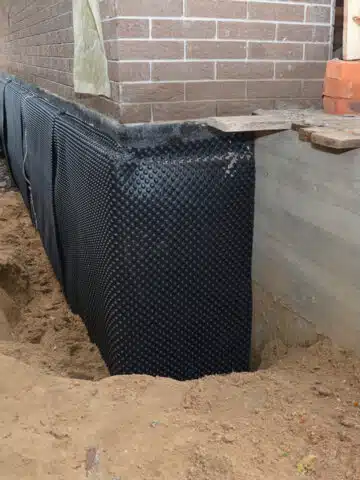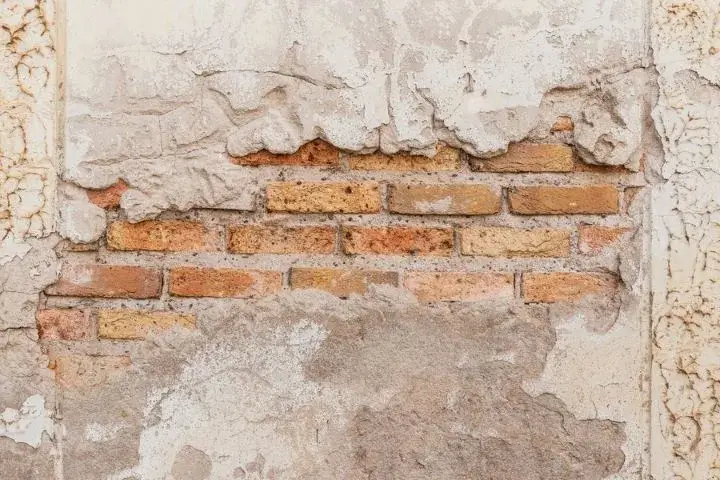Real reasons to hire a licensed damp specialist newcastle today
Checking Out the Different Strategies and Solutions for Effective Damp Proofing
Wetness in buildings poses considerable obstacles to both structural honesty and interior air quality. Various methods and options have actually arised to combat this pervasive concern. From traditional damp-proof membranes to cutting-edge chemical therapies, each method uses unique benefits. Comprehending these options is vital for effective moisture control. Nevertheless, selecting the appropriate option relies on specific structure conditions and needs, motivating additional expedition right into one of the most effective moist proofing strategies available.
Comprehending the Reasons of Wetness
Although moisture can arise from numerous resources, recognizing these reasons is essential for effective removal. Typically, moisture stems from 3 primary resources: increasing damp, passing through wet, and condensation. Climbing wet happens when groundwater takes a trip up through porous products, such as brick or rock, often due to an absence of a reliable obstacle (damp specialist newcastle). Permeating wet is typically caused by external elements, including roofing system leaks, malfunctioning seamless gutters, or harmed walls, permitting water to penetrate a building. Condensation, on the other hand, results from excess moisture in the air, frequently exacerbated by bad ventilation and temperature level distinctions, causing water droplets basing on surface areas. Determining these underlying concerns is crucial, as each kind of moisture calls for a tailored method for remediation. Correct assessment helps in determining the most effective solutions, eventually protecting the structural honesty of a building and boosting interior air high quality
Typical Damp-Proof Membranes

Chemical Damp-Proofing Solutions
Chemical damp-proofing remedies offer a cutting-edge method to stopping dampness invasion in buildings. These methods usually include the application of liquid chemicals that penetrate masonry and form a barrier versus increasing moist. Typically utilized chemicals consist of silanes, siloxanes, and various other water-repellent representatives that respond with surface area materials to develop a hydrophobic layer.The application procedure normally calls for drilling holes into the wall surfaces, infusing the chemical service, and enabling it to cure. This technique is specifically beneficial for older frameworks where conventional damp-proof membranes might be unwise. Moreover, chemical damp-proofing can be much less disruptive and a lot more economical than comprehensive renovation projects.While efficient, these services rely on proper application and environmental problems for peak performance. Routine maintenance and monitoring are necessary to ensure the durability of the damp-proofing therapy. Overall, chemical damp-proofing stands for a flexible choice for securing structures versus moisture-related damage
Tooth Cavity Wall Construction Techniques
Dental caries wall surface building and construction strategies offer various advantages, particularly in wetness control and energy effectiveness. By incorporating an air gap between 2 layers of stonework, these wall surfaces effectively alleviate water access while enhancing insulation. This mix not only shields frameworks from wetness however likewise adds to decreased energy intake.
Benefits of Tooth Cavity Walls
When thinking about effective wet proofing approaches, the advantages of cavity walls stick out prominently. Cavity walls contain two different layers, developing an air gap that properly lowers dampness infiltration. This style decreases the danger of moisture, as the outer wall surface works as an obstacle versus rain and water access. Additionally, cavity wall surfaces boost thermal insulation, which adds to energy efficiency by decreasing heat loss. They additionally offer audio insulation, aiding to create a quieter interior setting. Additionally, the air gap permits air flow, which aids in wetness control and minimizes the chance of mold growth. These benefits not just boost the overall comfort of a structure however also add to its durability and architectural honesty.
Dampness Control Approaches
Efficient moisture control techniques are critical in dental caries wall building and construction to ensure long-term protection against moisture. One main approach involves the consolidation of weep openings, which facilitate water drain from the dental caries, stopping build-up. Additionally, the usage of breathable membrane layers can assist manage wetness levels while allowing trapped vapor to escape. Appropriate positioning of insulation is additionally vital, as it ought to not obstruct drainage paths. Guaranteeing that the outer fallen leaves of the cavity wall surface are constructed with water-resistant products improves total sturdiness. Normal maintenance checks are important to recognize any kind of obstructions or damages early, securing the structure's honesty. Ultimately, a mix of these strategies creates a robust protection against dampness intrusion in cavity walls.
Insulation and Power Effectiveness
Insulation plays an essential role in boosting energy effectiveness within cavity wall building. By incorporating insulating products, these wall surfaces create a thermal obstacle that reduces heat loss and minimizes energy usage. Effective insulation not just helps preserve a steady indoor temperature but additionally reduces the danger of moisture, as it protects against condensation within the wall surface cavity. Numerous techniques, such as using rigid foam boards or mineral woollen, can be utilized to attain optimal insulation efficiency. Additionally, correct installation is necessary to assure that gaps and voids that site are decreased, which can or else endanger energy efficiency. Eventually, a well-insulated cavity wall surface adds considerably to total sustainability and decreases home heating and cooling prices for home owners.
Outside Damp Proofing Approaches
Exterior moist proofing methods are essential for protecting frameworks from moisture infiltration. 2 reliable strategies consist of the application of waterproof membrane layers and the setup of French drains. These remedies assist alleviate water build-up and protect the integrity of buildings.
Waterproof Membrane Layer Application
While numerous techniques exist for preventing dampness access, the application of water resistant membrane layers remains a highly efficient external wet proofing technique. These membrane layers are commonly made from materials such as polyethylene, rubber, or changed bitumen, supplying a robust obstacle versus water penetration. The setup procedure includes applying the membrane layer to the outside surfaces of wall surfaces or structures, making sure complete insurance coverage to avoid leakages. Proper attachment and sealing at joints are crucial to optimizing performance. Water resistant membrane layers can be used in various types, including fluid finishes and sheet membranes, allowing for versatility based on the particular requirements of the framework. This method not only secures structures from dampness yet also improves their long life and structural integrity.
French Drainpipe Installment
One reliable approach for managing groundwater and stopping dampness build-up around a building's foundation is the installation of a French drain. This drainage system contains a trench full of crushed rock and a perforated pipe that reroutes surface area water far from the structure. Proper installation requires mindful preparation, guaranteeing that the drain inclines away from the structure to facilitate perfect water flow. Additionally, the area of the drainpipe is crucial; it ought to be placed in locations prone to pooling or excess wetness. Normal upkeep, consisting of clearing up debris from the crushed rock and making certain the pipeline remains unobstructed, is necessary for long-lasting efficiency. Inevitably, a well-installed French image source drainpipe can considerably reduce the danger of water-related issues in basements and foundations.
Interior Waterproofing Strategies
Interior waterproofing strategies are vital for safeguarding a building's interior from moisture seepage and possible water damages. These approaches generally include the application of specific materials and techniques designed to develop a dampness barrier within the structure. One common method is making use of waterproof coatings or sealers on wall surfaces and floors, which prevent dampness from passing through surfaces.Additionally, mounting indoor drain systems, such as sump pumps, can effectively take care of water buildup in basements and creep areas. One more technique involves the usage of vapor barriers, which are mounted to prevent moisture activity from the ground into living spaces.Moreover, dealing with any splits or spaces in wall surfaces or foundations with appropriate sealers guarantees an extensive defense versus water intrusion. By applying these interior waterproofing approaches, homeowner can greatly lower the danger of mold and mildew growth, architectural damage, and other moisture-related concerns. Proper implementation of these techniques is crucial for long-lasting defense and building stability.
Normal Upkeep and Evaluation Practices
Normal maintenance and examination practices are crucial for assuring the long-term efficiency of moist proofing options in any building. Routine checks allow residential or commercial property proprietors to recognize very early signs of wetness breach, such as peeling paint, mold growth, and mildewy smells. These indications can signify underlying issues that need instant attention.Inspections need to be performed at the very least annually, focusing on susceptible areas like basements, creep rooms, and outside wall surfaces. Throughout these analyses, homeowner should examine sealers, water drainage systems, and air flow to confirm they operate correctly.Additionally, keeping downspouts and gutters is vital, as stopped up systems can cause water build-up near the foundation. Executing a regular upkeep timetable, in addition to prompt fixings, can substantially prolong the life expectancy of damp proofing measures and shield the architectural stability of the building. Proactive measures inevitably add to the overall health and wellness of the living atmosphere.
Frequently Asked Concerns
Just How Lengthy Does Damp Proofing Usually Last?
The duration of wet proofing efficiency differs, normally lasting between 20 to half a century. Variables such as application high quality, ecological problems, and maintenance methods significantly affect the durability of the damp proofing therapy.

Can I Damp Evidence My Home Myself?
The individual pondered the usefulness of do it yourself damp proofing. With proper study and the best products, it is possible. They also acknowledged the relevance of expert advice to ensure durable effectiveness and protect against future issues.
What Are the Indications of Inadequate Damp Proofing?
Signs of inefficient wet proofing consist of consistent stuffy odors, visible mold and mildew development, peeling paint, damp patches on wall surfaces, and timber decay - damp removal newcastle. Property owners must resolve these problems promptly to avoid additional damage and wellness problems
Does Damp Proofing Affect Indoor Air Quality?

How Much Does Professional Damp Proofing Cost?
Professional damp proofing costs vary considerably, usually ranging from $1,000 to $5,000 depending upon the residential property's dimension, the degree of the moist problem, and chosen methods. Each situation requires a tailored analysis for exact rates. Frequently, moisture originates from three key resources: increasing damp, penetrating damp, and condensation. When taking into consideration reliable moist proofing techniques, the advantages of dental caries wall surfaces stand out prominently. Exterior wet proofing techniques are essential for safeguarding structures from wetness infiltration. While different approaches exist for preventing moisture ingress, the application of water-proof membranes stays a highly reliable outside damp proofing strategy. Signs of inefficient damp proofing consist of consistent stuffy smells, visible mold and mildew growth, peeling off paint, damp spots on wall surfaces, and timber try this out decay.